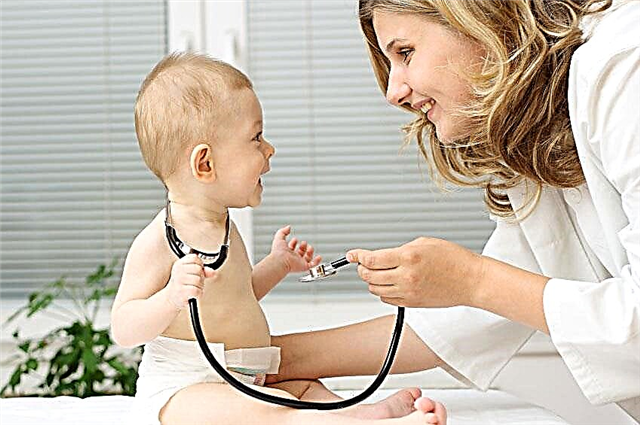Sometimes there are situations when, in addition to a routine examination by a number of specialists, an infant needs a biochemical analysis of venous blood. The very expectation of the procedure becomes a great stress for parents, because few people imagine how blood is taken from a vein in a baby.

Analysis from a vein
Indications for the analysis of venous blood in children
The blood obtained from a punctured finger is different from that which flows through a vein. In terms of the importance of information, both analyzes are not inferior to each other, however, under certain circumstances, the doctor needs venous blood for the study.
Many information portals on the Internet write that blood sampling from infants is made from a vein at 1, 3, 6 and 9 months. This is not true. For a routine examination of children under one year old, a general clinical analysis is sufficient, which is taken from the finger. Even with a focus on biochemistry, a child donates blood from a finger, not from a vein. In order for a study of venous blood to be required, clear indications are needed, including:
- the need to identify an allergen to which the child's body reacts sharply;
- suspected jaundice, hepatic dysfunction, viral hepatitis;
- to confirm or deny a diagnosis of diabetes;
- to prepare for a blood transfusion or surgery.
Attention! The pediatrician will definitely warn the mother that blood will be taken from a vein. In all other cases, the child's analysis is taken from the finger.
How to prepare
The attitude of the parents plays an important role. Psychological preparation with an explanation of the importance of the procedure will be required if the child is 4-5 years old. If the mother herself is afraid of needles, cannot stand the sight of blood and can easily lose consciousness in the treatment room, the dad or any other relative who knows how to remain calm should be with the baby.

Vienna on cam
In order for reliable information to be obtained the first time, you do not need to feed the child 6 hours before the test. The treatment room starts work early in the morning to make it easier for mothers to organize fasting blood donation - immediately after a night's sleep, the composition of the material will contain accurate data without distortion.
Few people know that the injection site can be anesthetized with a special anesthetic cream. If you apply it a few minutes before the procedure, the baby will not feel anything at all.
Good to know! Many mothers complain about nurses being forced to give their babies several injections because the first time thick baby blood does not go well into the test tube. The fault of the medical staff is no less than that of the parent - in order for the child's blood to be not thick, it is important to give the child clean water one hour before the test.
If blood sampling from a vein in newborns is to be performed during the cold season, the mother should take a bottle of warm water or a dry heating pad with her to warm the baby's hand upon arrival at the clinic. This will greatly simplify the procedure - the vein will become more elastic and will not hide in the tissues, as a result of which one puncture will be enough.
How is blood drawn
In young children, it is difficult to distinguish a vein from large vessels. Therefore, it is not always convenient to draw blood from the elbow. Most often, wreaths are used on the back of the hand. The veins located here are also involved in the delivery of droppers to newborns. To distinguish a vein from a large vessel, doctors can use special devices, on the screen of which venous flows are highlighted in a special way.
There is not much difference between how blood is taken from a vein from a baby and how from an adult. If this is a fence from the elbow, the handle is placed on a roller and a tourniquet is applied above the injection site. If the analysis is taken from the back of the hand, the handle is fixed, a needle with a catheter is inserted into the vein, to which vacuum tubes will already be attached to collect material.
What needles are used
Butterfly needles are convenient for babies. They got their name because of the external resemblance to an insect. On both sides, at the sharp end of the needle, there are two plastic wings. For them, the nurse first holds a butterfly needle to insert it into a vein, then spreads its wings and fixes them on the baby's skin. This allows you to exclude injuries to the walls of the vein from the inside due to movements of the baby.

Butterfly needle
What affects the analysis result
To ensure the reliability of the results, you need to try to fulfill certain conditions:
- give a child to drink to prevent dehydration;
- do not give reason for tantrums and worries, since an increase in the level of certain hormones will affect the readings, which will significantly distort the picture, especially if the analysis was prescribed to detect dysfunctions of the thyroid gland and adrenal glands;
- do not feed the child 6 hours before the tests, so as not to distort indicators such as bilirubin, sugar, cholesterol.
A child who can walk and run should get to the place of taking the analysis with a calm step or in a wheelchair so that the body does not sweat, the body does not lose fluid, and the blood does not become thick.

Baby drinks
What happens after the test
The collected and labeled material is sent to the laboratory, where special equipment and employees will study the material, pre-distributing it into test tubes. The data obtained in vitro (that is, in the glass) are entered into the table of results in the laboratory, from where they are sent to the district pediatrician.
When the results are ready
If there are no epidemics registered in the city, due to which additional loads are placed on the laboratories, the result will be ready the next day, since health workers take blood from infants early in the morning.
The specialist, having studied the indicators, will make a decision on the diagnosis and treatment. If necessary, the doctor can indicate the period after which it will be necessary to donate blood again.
Each parent can look at the table of results to compare the values of their child's blood counts with how much this or that value should normally be.
Important to remember! Making a diagnosis is the doctor's task; parents just need to follow his recommendations.



